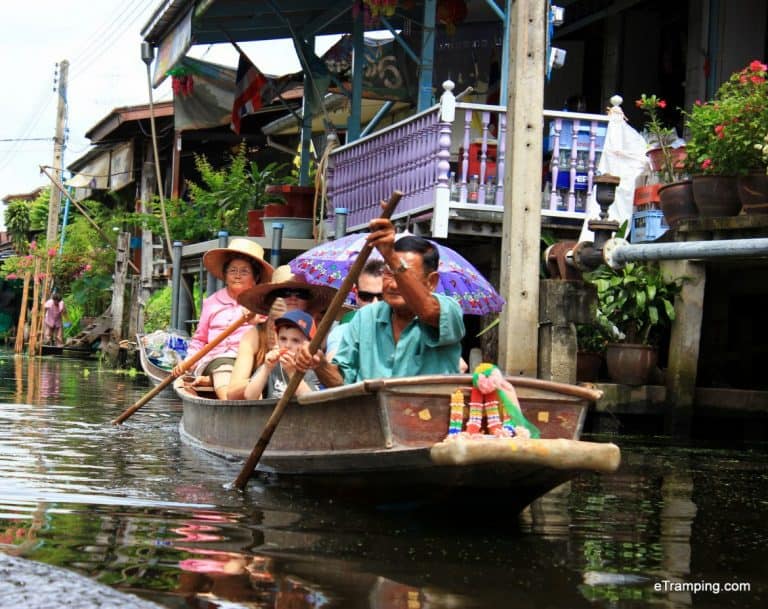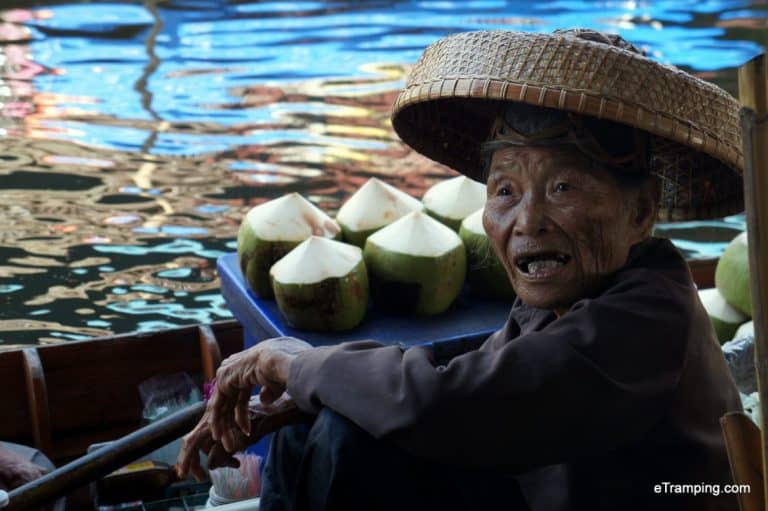Many people choose to begin their Thailand holidays in Bangkok, opting to witness the organised chaos of this fascinating city before moving on to the beautiful beaches of Phuket and Koh Samui. Despite the hustle and bustle of Bangkok, it’s important to remember that the Thai are deeply cultural and religious people and local customs should be respected.

However, for the uninitiated traveller, these customs are often unknown. Some people may prefer to have their journey organised in advance and use Thailand holiday packages. However, they don’t include the kind of grass roots information that will help you to not only experience but take part in the local culture and customs in an authentic and respectful way.
Which is why we have set out to demystify Thailand’s most common cultural practices and customs.
Quick Navigation
Toggle#1 The Universal Greeting.
Thai people use a universal greeting known as the ‘wai’ to show respect or to say hello, goodbye or thank you. It also demonstrates reverence when used before an image of Buddha. It’s as simple as bringing your palms together at about chest or nose height and performing a slight bow of the head.
Everywhere you go in Thailand you will encounter this greeting as it is an important part of the Thai etiquette and the locals will be particularly impressed with visitors who make the effort to greet them in this way.
#2 Respect The Royals.
Thailand is ruled as a constitutional monarchy and as such, the royal family is highly revered. The King is particularly adored for being a humble ruler who has dedicated sixty years of his life to serving his public.

Images of the King are everywhere in Thailand, from photos on the dashboards of taxis to posters that cover the facades of buildings. As a sign of respect, the King’s anthem is played before all sporting events, concerts and movies and it is the height of disrespect not to stand while it is playing.
Visitors should also never make negative comments about the royal family as Thailand operates under lèsemajesté law. Strictly enforced, any affront to the royals is a punishable offense and could even result in imprisonment.
#3 Patriotic Practices.
Whilst the Thai people revere their royals, it seems the government doesn’t feel its citizens are patriotic enough. In an effort to encourage nationalism amongst its people, the government has introduced a number of practices over the last decade.
One of the most obvious examples of this type of patriotism by institution is the broadcasting of the Thai national anthem twice a day. People are required to stand or stop whatever they are doing whenever the anthem is played.
Recently efforts to increase patriotism have been further boosted by a number of generals who are campaigning for traffic to also stop when the anthem is played. With the majority of Thai people already spending a fair bit of time in traffic jams, the generals argue it will cause little disruption.
#4 ColorByDay.
Inspired by legends from the Hindu religion that pre-dated the Buddhist movement, certain colors are positively associated with different days of the week. You’re most likely to notice this on a Monday when many Thai people honour the day the King was born by wearing yellow clothing.

Other colors that are worn include pink on Tuesdays and light blue on Fridays to acknowledge the day on which the Queen was born. More recently, political unrest has also given the color red a certain and less-favourable significance, associated with oppositional movements.
#5 A Problem-Free Philosophy.
Thailand has adopted the unofficial philosophy of ‘Mai pen rai’, a phrase that roughly translates to ‘never mind’. With a reputation for handling stressful or challenging situations with calm and composure, the Thai people prefer to see the ‘bigger picture’ and not worry about matters that have little significance in the grand scheme.
This laidback attitude complements the Thai people’s inherent sense of humour which is evident in all aspects of their daily life. Preferring not to take things too seriously, the Thai people believe that no matter what it is you’re doing it should involve an element of fun (sanuk).

#6 LGBT – It’s Not A Sandwich.
Thailand is renowned for its transsexual entertainers who are a tourist attraction in themselves and although the country seems to have quite a liberal attitude towards this topic, it is mainly based on Thai people’s non-confrontational nature rather than a progressive attitude.
In saying that, Thailand is a safe destination for gay, lesbian, bisexual and transgender travelers and the local ‘ladyboys’ as they are known, are not only prominent fixtures of mainstream society but also reach celebrity status for some of the higher profile performers.
#7 Look But Don’t Touch.
The majority of the Thai population practice the Buddhist religion of the Theravada school however a number of animist practices have also been adopted into the local religion. Although religious teachings discourage attachment to material objects, many of the Thai people wear protection amulets and worship images or statues of Buddha.

Most houses, shops and offices feature some kind of spirit house or altar and offerings such as garlands and food are made to please the spirits the Thai people believe inhabit the land. Some Thai people are very superstitious so visitors should not touch religious displays as the local people believe this can disrupt harmonious balance.
# 8 Body Matters.
According to Buddhist principles, the feet are the least valued part of the body as they symbolise attachment to the earth, which the Thai people believe is the reason for human suffering. On the other hand, the most valued part of the body is the head. As such, it is highly offensive to touch someone’s head or to raise your feet to point at religious objects or people.
Although most types of clothing are tolerated in tourist areas, all tourists wishing to visit shrines and temples should cover up and be aware that short skirts, sleeveless tops and flip flops may prevent them from entering. Shoes should also be removed when entering religious structures or homes.

Certain sacred places display signs that prohibit women from entering and visitors should not be offended by this practice. Women who would like to worship at these sites must do so from outside the building. It is also taboo for women to touch or pass things directly to a monk, however polite conversation is permitted.
#9 Many Monikers.
Although Thai people generally address each other by their first names, this is always followed by the respectful title of ‘Khun’. Used when referring to both men and women, this title is used in place of western titles such as ‘Miss’, ‘Mr’ and ‘Mrs’.
More traditional Thai nicknames are inspired by fruit, colors and animals such as Lek (small), Daneng (red) or Moo (pig) however more modern monikers used by the Thai include values and virtues such as Money, Good and Benz (yes, as in the deluxe automobile).
#10 Hygiene Habits.
Often a delicate topic with travelers, it’s important to be informed about the toilet and hygiene basics of any country you intend on visiting, particularly in Thailand where the standards are very different. Although most public toilets and hotels in the larger cities offer more modern facilities, things change the further out you get.
Outside of the cities, squat toilets are the main options available and are ‘flushed’ by sluicing water from a bucket provided down into the hole. Unlike western toilets, used toilet paper is to be thrown in a bin that is also provided, not flushed. Most of the ‘plumbing’ for these squat toilets are not equipped to handle toilet paper, so do not make the mistake of attempting to flush it.
Rather than a shower or bath, traditional washrooms consist of just a water trough and bowl or ladle to pour water over your body. There are even some areas in Thailand where bathing outdoors is a normal practice and men will usually bathe in their underwear while women will wear a cotton wraparound or sarong.
The key to enjoying any holiday in a foreign country is to be prepared and forewarned.
Have you visited Thailand? If so, what was the weirdest custom you’ve experienced?


